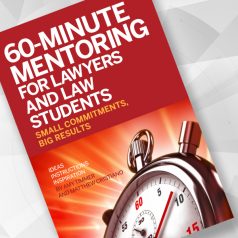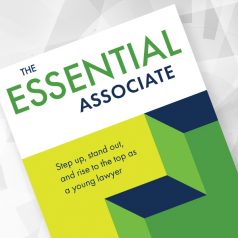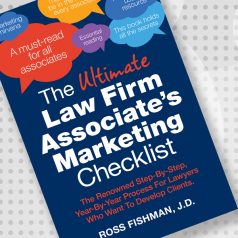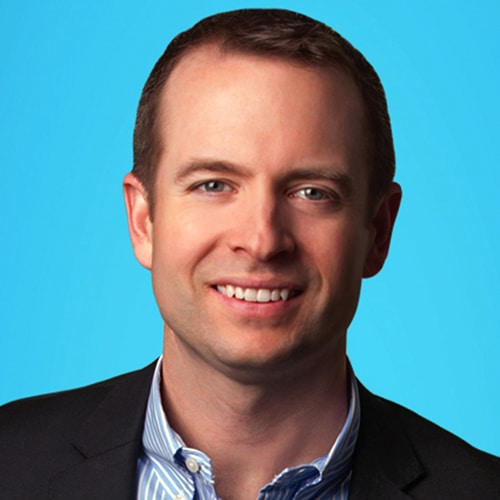When you challenge yourself, you declare that you “will” do something — there’s no wiggle room.
Research shows that over 80% of people abandon their New Year’s resolutions by the second week of February. I know that may not be surprising news — we all struggle to uphold the promises we make to ourselves.
Here’s the good news: There’s a better way to become a more successful version of yourself.
Challenge Yourself to Take Action Every Day
As a young comedian, Jerry Seinfeld hung a big calendar on his wall. He began writing jokes every day. After he wrote, he put a big red X over that day.
According to Seinfeld: “After a few days, you’ll have a chain. … Your only job is to not break the chain.”
Seinfeld didn’t resolve to become a great comedian. He challenged himself to write every day.
See the difference? It’s not just semantics.
Challenges are action-oriented whereas resolutions are outcome-oriented
With a resolution, you think about who you want to become. When writing down our resolutions, we often use the verb “want” in describing our desired outcome. To “resolve” to want something sounds passive.
With a challenge, you become the person you want to become through the consistent action you take. When you create a challenge for yourself, you declare that you “will” do something. There’s no wiggle room.
An effective challenge describes actions — ideally daily actions — not outcomes. For example, if you challenge yourself to post content on LinkedIn every day, you need to post. The action is clear, specific and deadline-driven.
On the other hand, if you resolve to “write more content this year,” there’s less urgency to get moving. What does “more” even mean?
Resolutions can also be limiting
We are often poor judges of our potential. Why set an arbitrary aspirational outcome for yourself when you can’t possibly know how much further your daily action can take you?
Don’t Fixate on Outcomes
You’re capable of far more than you can currently imagine. Consider the example of John Grisham.
Approaching the age of 30, Grisham was busy with his legal career, working 60 to 70 hours a week at a law firm in Mississippi. He wanted to write a novel but could not afford to stop practicing law to pursue his dream.
So, he created a challenge for himself. Every day Grisham would wake up at 5 a.m. sharp and hustle to his office. He would be at his desk, coffee, pen and legal pad in hand, by 5:30 a.m.
He challenged himself to write at least one page per day. Sometimes he wrote more. Three years later, by sticking to his rigorous daily writing routine, Grisham finished writing and editing his first novel, “A Time to Kill.”
Twenty-eight publishers rejected “A Time to Kill.” Eventually, a small publisher agreed to print 5,000 copies. While the book was a bit of a dud when it launched, Grisham kept writing and his second book, “The Firm,” achieved massive success. He has since gone on to sell over 300 million books.
And Focus on a Better Future Self
The real benefit of challenges is that they lead to sustainable behavior change.
If you write for 30 days straight, it will become habitual. The action will become engrained. You’ll start seeing benefits from your work and you’ll want to engage in more of the behavior that creates the results.
What stops people from becoming a better version of themselves is … themselves. We harbor limiting beliefs about what we’re capable of.
According to Harvard psychologist Dr. Daniel Gilbert, most people assume that their current self is their forever self. As he explains in a TED Talk, “Human beings are works in progress that mistakenly think they are finished.” The best way to overcome this limiting belief is to envision a better version of you — and start taking action to become your chosen future self.
The actions you take are up to you. What do you want to achieve? What actions will lead to the result? If you want to build a successful legal practice, I suggest you engage in marketing and business development every day.
Don’t think you have the time? Instead of spending all your time billing hours for clients, start treating yourself as your most important client, and sell yourself one hour of your time each day.
Don’t accept the idea that failure is inevitable. Buck the odds. Challenge yourself to take action every day. Don’t break the chain.
Illustration ©iStockPhoto.com
Subscribe to Attorney at Work
Get really good ideas every day for your law practice: Subscribe to the Daily Dispatch (it’s free). Follow us on Twitter @attnyatwork.
RESOURCES FOR NEW LAWYERS
The Essential Associate: Step Up, Stand Out, and Rise to the Top as a Young Lawyer. From attorney, coach and legal marketing expert Jay Harrington, “The Essential Associate” is for young lawyers who aspire to grow, succeed and advance on a partnership track at a law firm. Jay’s practical, step-by-step guide is aimed at helping new lawyers thrive in today’s competitive law firm environment. It includes insights from dozens of successful lawyers at firms across the country, general counsel at Fortune 500 companies, and top consultants to the legal industry.
The Ultimate Law Firm Associate’s Marketing Checklist by Ross Fishman has been used for more than 25 years by associates in their successful quests to become rainmakers. Want to build a personally fulfilling law practice on your own terms? Ross details the tactics to accomplish your goals. Expanded and updated to include the latest online tools, plus dozens of examples, stories, case studies and videos. It is the simplest, most-effective tool to ensure associates get on — and stay on — the right track to professional success.
Get more details and order your copy here.

























